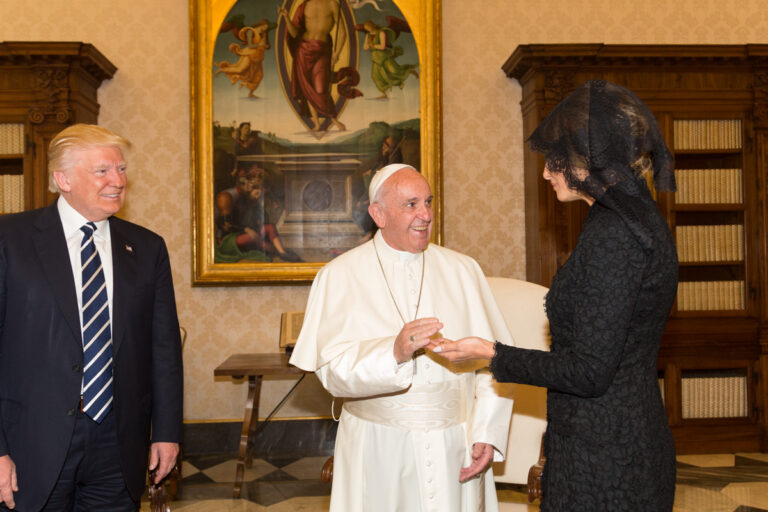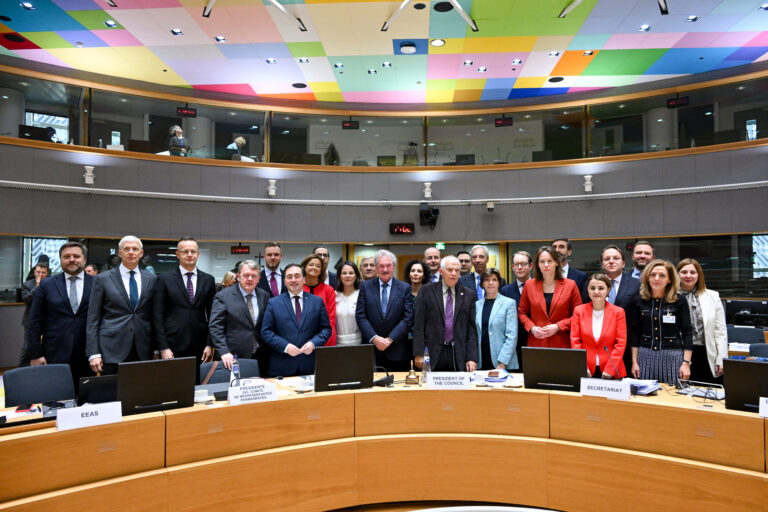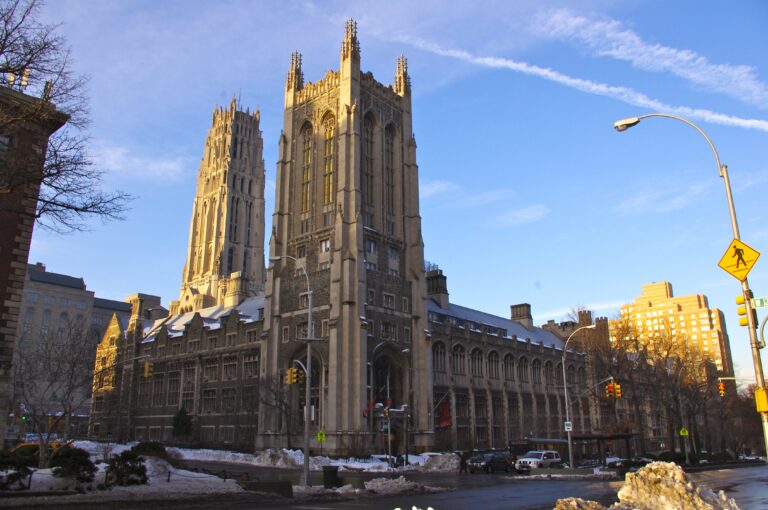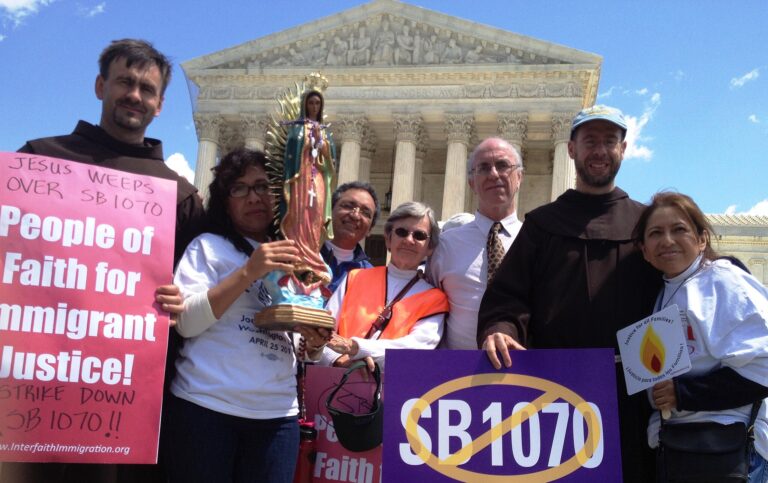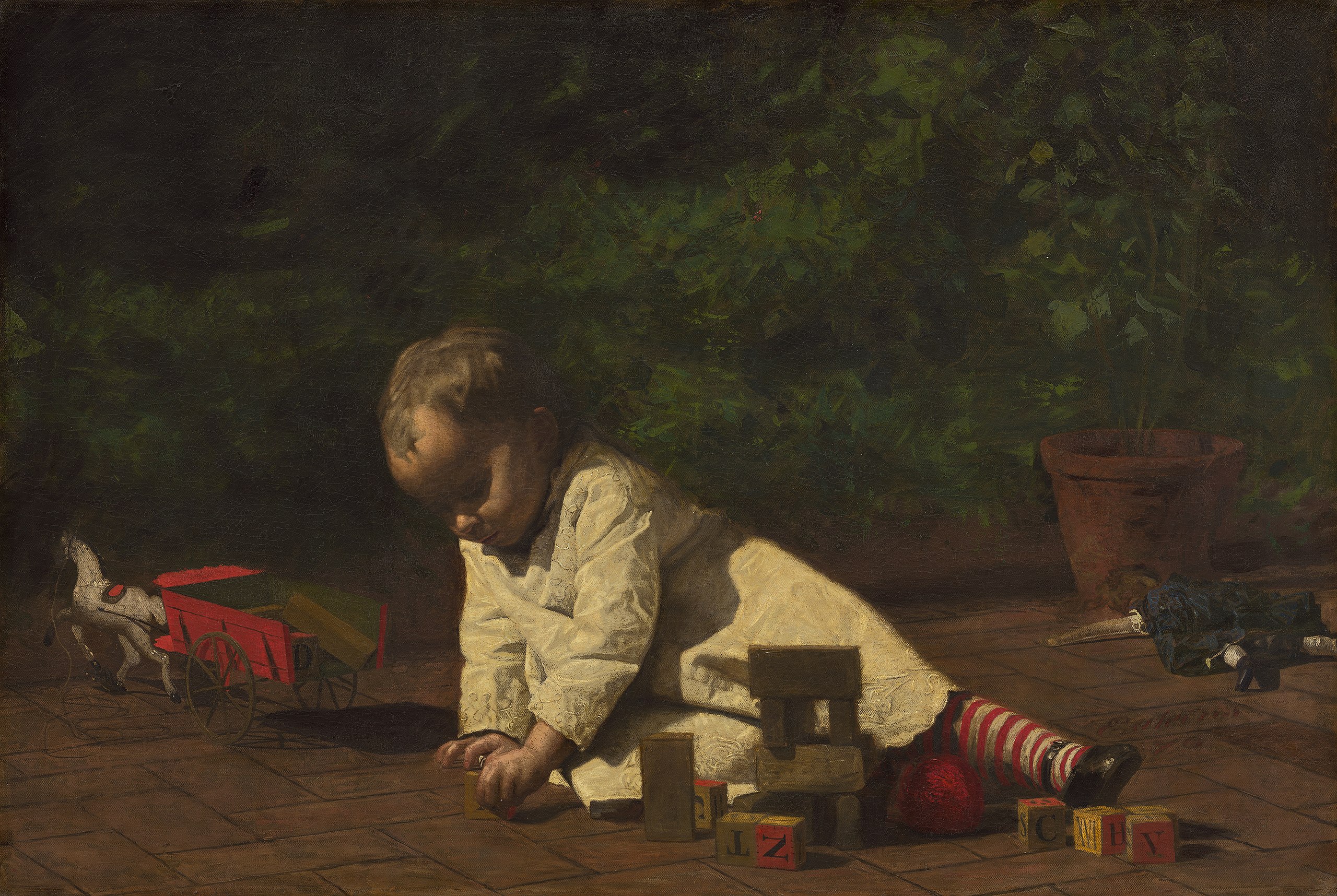
IVF Returns to the Spotlight: Dobbs, Fetal Personhood, and Extra-Uterine Embryos
Emma Kennedy
Baby at Play by Thomas Eakins (CC0 1.0)
Critiques of President Trump’s recent executive order on in vitro fertilization (IVF) have emerged not only from opponents on the left, who see the order as a “glorified press release” that will not actually expand IVF access, but also from within his own base. These critics are not concerned about the empty promises of the order; instead, they are worried that any delivery on his promise to expand access to IVF would get in the way of his, and their, commitments to oppose abortion. Why is IVF a divisive issue for conservatives––and what does Christianity have to do with it?
Dobbs, Fetal Personhood, and Extra-Uterine Embryos
As many anti-abortion conservatives celebrated the overturning of Roe v. Wade, some soon set their sights on a new goal: restricting access to assisted reproductive technologies (like in vitro fertilization) that often involve the destruction of embryos. This new target worried many reproductive healthcare providers and people undergoing infertility treatments, including many conservatives, who voiced concerns about the potential barriers that the ruling could pose for access to IVF. With conservative state legislatures now empowered to pass laws restricting abortion based on an understanding of life beginning at conception or at the point of fertilization, clinics might no longer be able to legally discard embryos created during IVF. The threats to IVF posed by potential fetal personhood legislation thus surfaced disagreements among conservatives about whether and how to regulate the creation of extra-uterine embryos within IVF.
This disagreement became all the more evident in February 2024, when the Alabama Supreme Court issued a ruling in response to a wrongful death lawsuit, concluding that frozen embryos could be understood as “extrauterine children.” The ruling prompted some fertility clinics in the state to stop offering IVF out of concern that they could face legal consequences for using the technique. This pause was relatively brief: the Alabama Legislature responded to the concerns about liability and IVF procedures by passing a bill in March 2024, which gives “criminal and civil immunity for death or damage to an embryo to any individual or entity when providing or receiving services related to in vitro fertilization…” However, Alabama lawmakers made it clear that the new law did not resolve long-term questions about the moral and legal status of extrauterine embryos in the IVF process.
Elsewhere, state lawmakers are introducing legislation to establish or advance “fetal personhood,” meaning that several other states are grappling with potential implications that proposed fetal personhood laws could have on IVF access. These efforts have attracted the attention of members of Congress on both sides of the aisle, but they disagreed about how federal legislation ought to respond to state-level impediments to IVF access. Just after the Alabama Supreme Court ruling was announced in February 2024, Republican Senator Katie Britt of Alabama called Donald Trump to share her concerns about the ruling; then former President Trump issued a statement hours later expressing his support for IVF and asking Alabama lawmakers to address access issues in the state. Senator Tammy Duckworth, a Democrat from Illinois, urged Congress to pass the “Access to Family Building Act,” which she, Senator Patty Murray, and Representative Susan Wild had introduced in January 2024, to “establish a statutory right to access IVF and other services,” which would ensure that people in states with abortion bans could still access IVF. Republicans blocked the proposed legislation––the second time they have done so––even as they voiced support for IVF access. In May 2024, Republican Senators Katie Britt and Ted Cruz introduced their own proposed legislation, the “IVF Protection Act,” which would amend the Social Security Act to require, as a condition of Medicaid funding, that states do not prohibit IVF services. The bill would leave room for states to regulate IVF, which Britt and Cruz seemed to embrace as a way of balancing two potentially conflicting commitments: in a jointly written op-ed published by the Wall Street Journal, Britt and Cruz promised that the bill would “protect both life and IVF.” Many on the left critiqued the bill as a political ploy that would not protect IVF from aforementioned state-level threats; Senate Democrats returned the favor and blocked the bill. Another round of back-and-forth blocking for the same two proposed bills happened again in September 2024.
The Senate stalemate on IVF continued amid the presidential transition from Biden to Trump, but as the first month of his second presidential term concluded, Trump signed the executive order “Expanding Access to In Vitro Fertilization.” The order did not in and of itself make any policy or regulatory changes that would actually expand IVF access; rather, it stated a commitment to “ensure reliable access to IVF treatment, including by easing unnecessary statutory or regulatory burdens to make IVF treatment drastically more affordable.” Its only directive was to require the Assistant to the President for Domestic Policy to submit “a list of policy recommendations on protecting IVF access and aggressively reducing out-of-pocket and health plan costs for IVF treatment” within 90 days. The order reflected support for IVF that Trump expressed repeatedly on the campaign trail. He went so far as to call himself “the father of IVF”, and he promised supporters that he would support the funding of IVF treatments in his second term.
Despite Trump’s enthusiasm for IVF, many who voted for him were dismayed by the executive order. Baptist Press reported that “[e]vangelical ethicists are urging policymakers to tap the brakes on in vitro fertilization (IVF) expansion despite an executive order by President Donald Trump and widespread enthusiasm for the practice.” Several cited in the article recommended tight regulations on IVF rather than expansion of the practice. Catholic Bishops Daniel E. Thomas and Robert E. Barron, who lead the U.S. Conference of Catholic Bishops’ Committee on Pro-Life Activities and the Committee for Laity, Marriage, Family Life and Youth, respectively, issued a statement that called the executive order “fatally flawed.” Catholic Bishop Michael F. Burbidge of the Diocese of Arlington, Virginia, who recently published a lengthy pastoral letter on IVF, issued a statement in response to Trump’s executive order, calling it “a disappointing and unnecessary action.” He predicted that expanding access to IVF in the way that the executive order promised would not only fail to address risks in the IVF industry for parents and children, but would also likely “result in the abandonment or death of millions of embryonic human persons.” Sister Renée Mirkes, a Catholic ethicist and Franciscan Sister of Christian Charity who works for the Saint Paul VI Institute in Omaha, Nebraska, wrote an open letter to J.D. Vance that reminded him why official Catholic teaching opposes IVF and suggested he consider supporting NaProTechnology––an approach to treating infertility created by a Catholic physician that aligns with official Catholic teaching. Cynthia M. Allen, a columnist for the Fort Worth Star-Telegram, wrote in an op-ed:
“To some pro-life Catholics, especially those who stood by Trump even as he eased away from the Supreme Court’s consequential Dobbs ruling returning abortion law to the states, his unfettered support for IVF feels like a betrayal.”
Anti-Abortion, Anti-IVF? How Catholics and Baptists Evaluate Family Formation Technologies
To understand why some, but not all, Christian conservatives take issue with IVF, it is important to first understand what the procedure involves and how it has evolved. Debuting in the U.K. in the late 1970s and the U.S. in the early 1980s, IVF entails creating and cultivating embryos in a laboratory with the goal of transferring one (or more) embryo into the uterus of an intended parent (or less commonly, a surrogate). The technique has given many couples struggling with infertility a new possible avenue to conceive. Since its introduction, over 10 million children have been born globally thanks to IVF, although the technique still has fairly low success rates in the 25–30% range. Early on, IVF was associated with multiple pregnancies (and the risks that come along with them), but changes in clinical guidelines and practices to recommend the transfer of a single embryo, rather than multiple, have reduced the incidence of multiple pregnancies.
Many people undergoing IVF find that the combining of their gametes (egg and sperm) in the lab does not result in the creation of as many embryos as they would like––common problems of “fertilization failure” and early embryonic arrest” demonstrate that despite clinicians’ efforts, sperm may fail to fertilize the egg or the embryo may stop developing. Others experience the opposite––they end up with more embryos than they know what to do with. Cryopreservation provides a means of storing embryos for potential later use, but for families who do not want to or cannot use these remaining embryos, it can also function as a way to delay difficult decisions about whether to donate or discard excess embryos. At this point, estimates suggest that millions of embryos remain on ice in the U.S. Many undergoing IVF find it challenging to decide what to do with remaining embryos. These difficult decisions are made against the backdrop of scientific disagreements about common strategies for assessing embryo viability as well as societal disagreements about the moral status of human embryos, which range from the view that embryos are morally similar to human persons to the idea that embryos are merely a clump of cells. These disparate views mean that the stakes of embryo disposal in the IVF process can seem vastly different: for some people, including many anti-abortion conservatives, discarding embryos is an injustice, a grave violation of respect for persons; for others, embryos can be thrown away like any other biological waste product. Still others fall somewhere in between: reluctant to discard embryos to which they an emotional attachment after hoping for their creation in the often grueling process of infertility; unsure of whether they would like for another family to have an embryo with their genetic material; and uncertain about how embryos donated for research might be used.
Religious leaders and communities have weighed in on assisted reproductive technologies (ARTs) like IVF since their initial use. I will only highlight two Christian denominations’ evaluations of IVF here, since they are most pertinent to the discussion of current political debates regarding IVF, but it is worth noting that there is a huge diversity of perspectives on IVF and its ethical implications among people of religious faith). As early as 1987, official Catholic teaching objected to IVF, not only because of the possibility of destruction of embryos, but also because the technique is seen as a replacement of sexual intercourse within marriage. The most elaborate articulation of the opposition to IVF is found in the 1987 Instruction from the Congregation for the Doctrine of the Faith (CDF) known as Donum Vitae. The document finds that IVF violates the ends of sexual intercourse in marriage by separating the act of procreation from the union of spouses––a flip-side of the problem with contraception (which has the union aspect but frustrates procreation) that Pope Paul VI outlines in his 1968 encyclical Humanae Vitae. Further, Donum Vitae appeals to an ethical commitment to respect for persons to frame its concerns about embryo tampering and destruction within the IVF process. For the CDF, embryos after fertilization are biologically unique and thus worthy of the respect we owe persons; therefore, their destruction, and the technology that facilitates that, ought to be opposed. Like other official Church teaching on issues related to reproduction, however, lay Catholics in the U.S. appear relatively comfortable departing from the Church’s view. Survey data suggests that as of 2013, most Catholics do not view IVF as morally wrong; most find it either morally acceptable or think it is “not a moral issue.” More recent survey data suggests that most Catholics support access to IVF.
Until recently, the Catholic Church was somewhat singular in its official opposition to the technique. Last year, however, the Southern Baptist Convention passed a resolution critiquing IVF and calling for the limiting of reproductive technologies to uses consistent with an affirmation of “the unconditional value and right to life of every human being, including those in an embryonic stage.” The resolution resonated with Catholic teaching and its emphasis on “the embodied union of husband and wife as the singular normative expression for procreation” and in its concern about “the continued freezing, stockpiling, and ultimate destruction of human embryos” in the IVF process. It also raised concerns about the use of genetic testing to determine embryo viability and the practice of freezing and storing embryos. The resolution’s dismay at embryo destruction reflected a position already evident in the Southern Baptists’ opposition to embryonic stem cell research and abortion; however, the debate surrounding the resolution and subsequent media coverage made it clear that Southern Baptists leaders did not fully embrace the resolution’s wholesale opposition to IVF. In the debate on the resolution, some leaders shared their personal experience with IVF and pointed to the family-oriented intentions of parents seeking to conceive via infertility treatment. These leaders’ framing of IVF as supportive of family formation underscored the gap in how people view abortion on the one hand and IVF on the other, even as both may involve embryo destruction.
Media coverage and public discourse on abortion often emphasizes the context of unintended pregnancy, which can encourage a linkage between abortion and “rejection” of childbearing or family formation––even though research on abortion makes it clear that people opt to terminate wanted and hoped-for pregnancies, too. The IVF process, by contrast, is often viewed more sympathetically by those who express commitments to “family values,” since childbearing is the hoped-for outcome that couples are struggling to achieve on their own. Qualitative research with evangelical Protestant women who had undergone IVF explores how intentions related to family formation and parenthood shape moral distinctions between embryo destruction in the process of IVF and in the case of abortion. Sociologist Danielle Czarnecki describes how one woman she interviewed “pointed to her intention to create a family in order to justify embryo loss in the context of IVF” even as she described herself as “opposed to abortion completely, one hundred percent.” My own qualitative research with U.S. Catholic women who have undergone IVF treatment surfaces a similar distinction, as several interviewees linked their formation as Catholics with their valuing of family life and relationships, which motivated them to pursue IVF as a way of having children. Importantly, however, several of these interviewees also expressed concern about the potential destruction of embryos in the process, and they tried to limit or eliminate the possibility of embryos being discarded when they went through IVF. Other interviewees avoided IVF altogether.
Although extensive analysis of the moral commitments and concerns that motivated these varied choices is beyond the scope of this piece, it is interesting that these varied responses resonate with different policy recommendations from religious leaders concerned with embryo destruction. Some who have critiqued Trump’s executive order, including the Catholic Bishops’ responses described above, advocate for total opposition to IVF. Evangelical ethicists weighing in may agree with the Catholic Bishops’ moral opposition to IVF, but some of them take a different direction in policy. As previously mentioned, they advocate for what they see as a more realistic outcome given widespread public support for IVF: regulation of the procedure that would track and limit the number of embryos created during IVF to minimize the number of embryos frozen or discarded in the process.
Of these two policy options, increasing regulation of IVF seems much more likely to attract bipartisan support. Although progressives may not share exact concerns about embryo destruction, many do take issue with the lack of regulation of fertility clinics. These critics, which include both secular and theological perspectives, tend to worry about issues including the eugenic implications of preimplantation genetic testing, the inaccurate and at times predatory marketing tactics of fertility clinics, the physical and emotional toll of repeated treatments, potential health risks of fertility procedures that go unexamined or undisclosed, and social inequalities that pervade the industry. At this point, however, there is no indication that the Trump administration is interested in advancing regulations to address these problems (outside of IVF access), especially with Elon Musk––both an ardent supporter and user of assisted reproductive technologies with an allergy to government regulation––in a prominent advisory position. It remains to be seen how members of Congress, state legislators, and the Trump Administration might attempt to address these disagreements about IVF and embryos, and how religious leaders and communities will respond to their attempts. ♦

Emma McDonald Kennedy is assistant professor of Christian ethics at Villanova University, where she teaches classes on bioethics, social ethics, and contemplation and social action. Her current research projects examine moral agency, reproductive healthcare, and biotechnologies with resources from Christian ethics and qualitative methodologies.
Recommended Citation
Kennedy, Emma. “IVF Returns to the Spotlight: Dobbs, Fetal Personhood, and Extra-Uterine Embryos.” Canopy Forum, April 2, 2025. https://canopyforum.org/2025/04/02/ivf-returns-to-the-spotlight-dobbs-fetal-personhood-and-extra-uterine-embryos/.
Recent Posts



